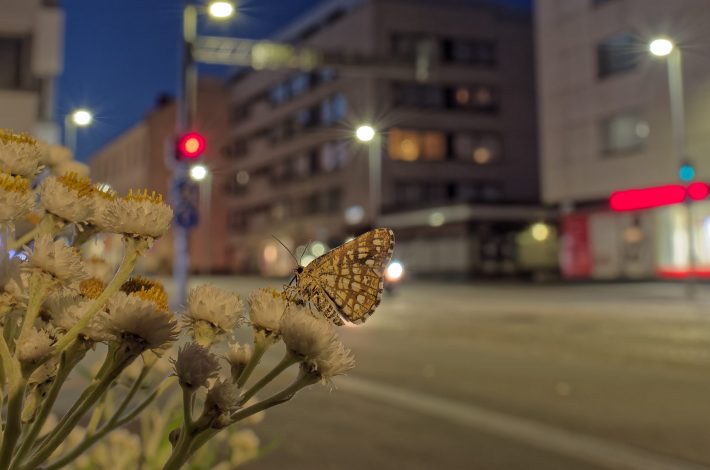A new international study investigates the effects of light pollution on overwintering moths in both urban and rural populations.

Many insects use daylength to synchronise their life cycle with the changing of seasons. Shortening late summer days, indicating the switch to autumn, trigger the transition to the overwintering state for pupa. However, light pollution can lead caterpillars to interpret the days incorrectly, causing the pupae to immediately develop into adult moths. These moths, misled by man-made light, cannot successfully reproduce in autumn or survive the winter.
Published in the Journal of Applied Ecology, a new study tested how light pollution affects the development of latticed heath caterpillars into overwintering pupae. The study also compares caterpillar populations in both urban and rural environments in Mid European and Nordic countries. This was completed with the aim of uncovering possible genetic adaptations in urban populations.
According to the study, moths in both urban and rural environments shared the same negative response to light pollution. Unfortunately this suggests that urban populations have not adapted to their environment, which is filled with light from human activities every night.
Moth populations in Mid Europe were more susceptible to light pollution compared to the Nordic population. This emphasises the need to decrease the adverse effects of light from human activities, particularly in Southern latitudes. However, light pollution still had a negative effect on the Nordic moth population too, highlighting the need to decrease light pollution levels all over Europe.
Sami Kivela, one of the study's authors from the University of Oulu, commented "Light pollution already has an increasing effect on nature, and according to our study, it seems that it may also threaten insects' successful overwintering."
Kivela expressed that future studies should focus on how widely insects are susceptible to the detrimental effects of man-made light, and to what extent it explains the decline of insect populations.
Professor Thomas Merckx (Vrije Universiteit Brussel) explained "Our results are promising in the sense that light pollution is a factor of human activity that can be reduced fairly easily. Decreasing it should be a key priority in protecting insects and safeguarding our ecosystem."
This article has been adapted from a University of Oulu press release.
Read the full paper here:
https://besjournals.onlinelibrary.wiley.com/doi/10.1111/1365-2664.14373






